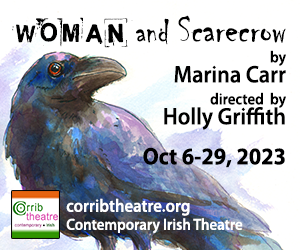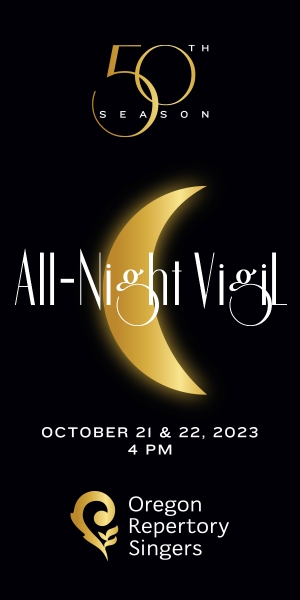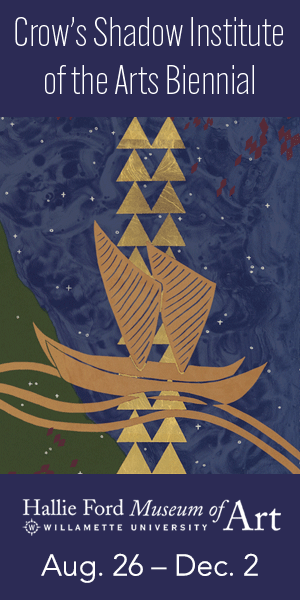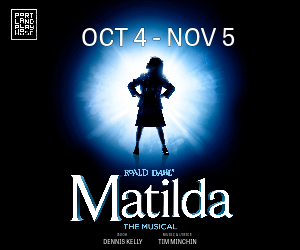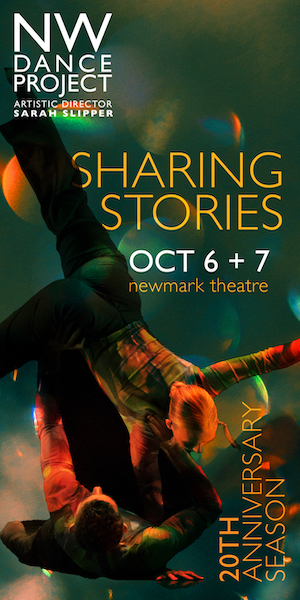
In NW Dance Project’s close-in Eastside Portland headquarters building, in a neighborhood of old houses and warehouses within sniffing distance of the aromas from the nearby Franz Bakery factory, a clatter of energy is filling the classrooms and rehearsal hall once again.
“Twenty years – what are we about?,” Sarah Slipper, the company’s cofounder and artistic director, asks. “We’re following our tradition of creating new works.” Every piece in this landmark new season beginning in early October, she adds, will be a world premiere, as most of the dances performed over the company’s previous 19 years have been. “I’m trying to give voice to choreographers, male and female, to create new work.”
The past three-plus years since the beginning of pandemic shutdowns haven’t exactly been a bed of roses for performance companies, including NWDP. After essentially losing a year of performances, the company returned to live shows in November 2021. As performing spaces small and large were beginning to reopen, the company produced a full program at the Newmark Theatre, in the core of downtown Portland’s cultural district, with new works by Slipper and resident choreographer Ihsan Rustem. “We were the first show back in the Newmark. And we had a good house,” Slipper remembers.
Then the Omicron virus hit, and audiences once again disappeared. Now, rebuilding is a challenge for virtually all theater, dance, and music groups. For NW Dance Project, Slipper says, “It feels like this was a lost generation.”
As with so many performing companies, it was stop, start, stop again, start again. NWDP had performed at Zidell Yards’ outdoor space in September 2020 (because of Covid distancing restrictions, Executive Director Scott Lewis says, the show was limited to less than 50 seats, and postponed a week because of smoke from wildfires), then not again in real time and space until the Newmark show in 2021. Instead, Slipper says, the company’s focus became classes, “and then rebuilding from there. This has not been easy. Our priority became education. We were doing Zoom, like everyone [the company produced a series of Zoom performances by 19 international choreographers], but we also got the kids in here for classes, on rotation. There are just things you can’t do on Zoom.”
Things picked up in 2022 with live shows in the Newmark in both the spring and fall, and an in-studio winter show. NW Dance Project’s calendar has been full in 2023, with live shows at Beaverton’s Patricia Reser Center for the Arts in March and a Stravinsky program in the Newmark in June, with October’s show in the Newmark and another in-studio December show coming up.
And it’s not as if the company was sitting on its haunches before that. As bad as the situation was for performing groups in the United States, Slipper discovered, things were different in Europe. While touring largely dried up, especially in the U.S. (the Dance Project lost several contracted North American tour dates because of the pandemic), NWDP performed in Germany in 2022. The difference between lackluster houses in the U.S. and what the company experienced in Germany was eye-opening: “Eleven hundred seats in Bonn, and it was packed to the rafters. It’s just amazing in Europe; they are so back into the arts. It’s so different here.”

Now, NW Dance Project’s big and mostly bare rehearsal hall a little north of E. Burnside Street is humming once again. It’s an industrial space converted to aesthetic purposes, painted white with gray sprung flooring. One wall is covered with large mirrors, so the dancers can see how they look in action. Rows of fluorescent lights hang below the high rafters. Three large banks of multi-paned windows let in natural light from the street side to the east. A long strip of gray patterned carpet, punctuated by long plain white benches, accommodates those on the sideline. When they’re not out on the floor with the dancers, this is where the choreographers sit, their laptops and a large amplifier close at hand. There is a silence amid the noises, and noises amid the silence – as the dancers practice turns, you can hear the squeak of socks on the floor.
On a pair of midweek days about two and a half weeks before the company’s season-opening program on Oct. 6 and 7 in the Newmark, I dropped in for several hours’ worth of rehearsal. There’s always something rough-cut and exciting about catching rehearsal: You are helicoptering into the creative process, when things are still being shaped. And you don’t get the full picture. For the artists any rehearsal is part of a longer flow, when things are tried and abandoned and tried again and refined and at some late point achieve their final shape. You are seeing a fragment.
But you are also seeing the craft at work, in detail. It’s a bit like looking closely at a 4-by-4-inch section of a large abstract-expressionist painting: You get a vivid sense of the brushstrokes, but not of the whole canvas. Furthermore, different choreographers work in different ways, and different dances might be in different stages of development: you are seeing a snapshot, not a movie. Still, to understand the parts is to begin to understand the possibilities of the whole.
The October program, titled “Sharing Stories,” includes three world premieres: Murmuration, choreographed by Serge Bennathan; Activating Infinity, by Bryan Arias; and Slipper’s Another, Tomorrow. To begin its 20th season in Portland, the company includes six dancers: Quincie Bean, Nicole Hennington, Anthony Milian, Alejandra Preciado, Lucia Tocci, and Ingrid Ferdinand, who was out with an illness during my studio visits.
And, as Slipper underscores, the entire season, which will have winter, spring, and summer programs in addition to October’s fall show, will consist of new work. “This is crazy,” she says with a laugh. “Good, but crazy. Wonderful. We just said, ‘This is what we’re going to do for our 20th.’”
Serge Bennathan, choreographer, “Murmuration”

It’s two weeks into rehearsal. Five dancers, all young, take the floor. Four are women, one is a man; and on this midweek afternoon, they are birds.
A movement begins. Time slows down: arms stretch out tortuously like a nearly frozen unfurling, then draw back in. A sudden dip and rise breaks the idyll. All eyes move to the dancers’ fingers, which are flexing rapidly, like little wriggling snakes on the ends of sticks. Then full movement, synchronized, erupts.
There is no music during this rehearsal: only the movements, the steps, and the occasional voice. Bennathan calls, “Breathe!” and then again, “All around!” as the dancers circle the stage together and then break apart. Out the window, a siren wails. It does not break the dancers’ concentration.
Bennathan, a French-born Canadian dancemaker and painter who began his dance career at age 18 by joining the National Ballet of Marseilles and later founded the dance company Les Productions Figlio, has created new works for companies ranging from the National Ballet of Canada to Les Ballets de Monte-Carlo to Teatro San Martin Ballet Contemporaneo in Buenos Aires. In the Dance Project’s Portland studio, he sits on a bench at the edge of the dance floor, legs planted wide apart, body forward, watching intently. Muscular and stocky, with a close-cropped beard and shaved head, he is obviously a dancer.
He moves onto the studio floor barefoot, blue pants rolled up around the ankle and wearing a loose-fitting, buttoned blue shirt with tails untucked, affording him freedom of movement. His head, heart, and muscles are in accord. At key moments he calls out a direction, moving his arms and upper body emphatically, like an orchestra conductor shaping the movement for the performers. His experience is both obvious and crucial: a member of an older generation passing knowledge to a younger, imparting at different times the grand shape of the dance and the details that give it life. He is teaching, and the learning enters the dancers’ bodies and becomes internalized, like breath.
The five dancers work easily together, a team-in-the-making: How do we break this thing down, get the movements right, build it up again? How do we make it flow? They are the performers. Bennathan is the creator and coach.
As a couple of dancers move to the sidelines for a break, Bennathan begins to work independently with one dancer, Lucia Tozzi. Two others break off on their own, going through some patterns and lifts. Tozzi is incorporating words into her movements, reciting lines from a poem, fitting the flow of language into the flow of her body. “That would make me shiver,” she intones, and again: “multicolored flowers with exquisite fragrance … I had no more longings …”
A day later, at the end of another rehearsal for Murmurations, the difference is abrupt and startling. Tozzi has taken the movement and words inside herself and redirected them outward with exhilarating confidence. She races boldly in a circle around the stage. The words of the poem, spoken softly and tentatively the day before, are now shaped and projected with strength and meaning and precision, as if she were an actor delivering a soliloquy on a merry-go-round.
On this first day Anthony Milian and Nicole Hennington, the other two dancers on the floor, seem to be working on matters of trust, which is vital to partnering. (Milian, in fact, refers to this scene as “the trust fall.”) Hennington goes slack, falling backward, allowing herself simply to drop. Just as she is about to hit the floor, Milian catches her, raises her again, and they separate – smoothly, with a confounding, contradictory sense of near-catastrophe and deceptive ease; all within scant seconds of movement and time.
Except for the recited poetry and Bennathan’s instructions, the rehearsal has been silent, concentrating on movement rather than sound. There will be some recorded music, Bennathan says, but mostly a soundscape – “the sound of the forest.” A murmuration, you might say, like a mass movement of starlings or other birds.
The dance, Bennathan says, is about the dancers and coming together, like birds on wing. In a murmuration, a mass of birds, sometimes thousands, flies together, changing directions together, in a kind of group intelligence that takes physical form. Moving together in flight, swirling, coming close but avoiding one another: a harmony of movement, individual and collective at once. A miracle, you might say, of nature. The word “murmuration” comes from the sound of many wings flapping in flight.
In the sky, a murmuration can seem like a vast dark cloud, dancing swiftly through space. And on the stage? It should be fascinating to see.
Sarah Slipper, choreographer, “Another, Tomorrow”

This rehearsal begins with props: nine chairs scattered about the dance floor. “How fast can you bring them together, and then be quiet in the darkness?,” Slipper, the choreographer of “Another, Tomorrow,” asks the five dancers on the floor.
Illusion is in the making. First, she declares, “I want no chairs.” Then, “a circle of chairs.” While the rehearsal hall lights shine bright, Slipper sets the imaginary scene: “You’re in a pool of light. Let’s just say, a tiny light.”
This is the ABCs, the practical steps that must be learned, like the measure and notes in a musical score and the fundamentals of fingering a musical instrument, to make the thing work. The dancers line up facing one another in profile at center stage, three chairs on one side, two on the other, and sit down. Each side leans forward toward the other, as if in a challenge. Something prickly, a silent struggle, is in the air.
A little later the dancers begin a similar scene, this time with recorded music added. They are sitting in the chairs, which are now in a circle.
“Anthony,” Slipper calls out to Milian, “could you stand on your chair?”
Then, to Alejandra Preciado: “Allie, can you go over and see if you can climb him?”
Preciado does, using the edge of the seat as a stepladder.
“No, that’s too easy,” Slipper decides. She wants a smoother movement, without the step-between.
They try again. This time Milian leans down, and Preciado boosts up, legs dangling, and holds him around the neck as he straightens up again, bringing her with him as he rises.
“Now,” Slipper says, “how can she slip down?”
Fluidly, legs still adrift, Preciado slides downward toward the floor.
“Slowly. Slowly. Now, blackout.”
In chops and blocks, rehearsal continues. Slipper shifts from her offstage bench to the dance floor, dressed all in black, lean and lithe and used to the mobile possibilities of her entire body. At each step by the dancers she looks, calculates, makes little adjustments: Let’s try it this way. At this stage in the rehearsal process there’s a lot of exploration. As with a painter in the midst of a canvas, each fresh brushstroke opens new possibilities, and possibly precludes others.
From Slipper’s computer, the music kicks in: slow, moody, layered, a little portentous. As one dancer lies sideways on the floor, another approaches her in creeping Igor-like steps. The dancer on the floor begins to writhe and then slowly rise, pulling herself upward by the creeper’s neck. With the addition of the music, things speed up – both the soundtrack, which is a rising, march-like crescendo on violin, and the solo dancing by Hennington, which becomes swift and rigorous.
There is resting during the rehearsal, but also a lot of individual and small-group practice when the dancers aren’t being worked with directly. Trials and repetitions. Building body memory. At one point Quincie Bean lies on her back, knees up, making little rapid thuds on the floor with her feet, like the swift slaps of a Mississippi River paddleboat. They turn out to be key to a specific scene in the dance.
As the scenes unfold there is a combination in their progression of classic ballet movements and angular contemporary twists and thrusts – a visual and physical language of discord. We call it “contemporary,” and it is, but within it is also a lot of old-fashioned miming, the classic expressionism and frank exaggeration that have been at the core of dance and theater as long as we’ve known them. Into each new contemporary, a core of history and tradition survives.
Slipper is keeping most of the action in her new dance clustered toward the center of the stage, in a kind of reluctant claustrophobia, and that calls for hard work on the part of the dancers – it takes a lot of trust and collaboration to create a mood of distrust and isolation.
Slipper tosses out a mood-setter for a scene featuring Milian and Preciado, a situational statement for the intimate struggle of this duet: “Oh! You’re annoying me!” – work with that. Milian tosses Preciado three times. After the third toss she falters and lands on him, then twirls and escapes, in a game of get-away-closer.
At another point Tozzi is squeezed out by the other three women and then rushes cross-stage to where Milian stands. She leaps and holds him around the neck; he supports her weight as he also shies away.
Think of it as a scene of crowded isolation, Slipper declares: “In the subway, at rush hour, I’m just holding on to my own spot.”
“It’s a bit cold,” Slipper says later of her new piece. “I like relationships, but I’m looking for something where a group of people are close, but isolated. It’s kind of dark … black on black,” she adds with a laugh. “I’m trying to get the dancers’ input, too. In this one, they’re dealing with a group of people who maybe don’t trust each other.”
Bryan Arias, choreographer, “Activating Infinity”

“All right. Let’s go for it. Go for it. No stops. … Here we go,” Bryan Arias, choreographer of Activating Infinity, declares, and the music – a kind of throaty foghorn sound with piano chord – begins. Five dancers, moving in and out, flying toward space and back again. They are a five-pronged organism, working separately and together at the same time. And they are, if the title holds the meaning, activating infinity.
This is a rehearsal, and there are inevitably, of course, stops and starts, re-dos, honing, getting the mood and movements down to the bone.
Arias, born in Puerto Rico and raised in New York City, has created dances for companies as varied as Nederlands Dans Theater, Ballet Theater Basel, Zurich Ballet, Leipzig Ballet, The Paul Taylor Company, and The Bolshoi Ballet. Trim and agile in a baseball cap, dark sweatshirt and pants, and well-trimmed dark beard, he is very low-key, yet also very much in charge.
He speaks softly to the dancers, instructing and directing, encouraging, and sometimes breaking into a broad smile. He communicates a lot with his hands and arms, and, like Bennathan and Slipper, when he wants to explain a specific move he sometimes demonstrates. He gives instructions on how to navigate a turn while clumped together as a Group of Five. At one point the dancers re-form into a line, holding on to the hand or shoulder of the dancer in front of them, stretched out like a string of DNA.
Music comes in and out – as Arias notes at one point, it’s “still under construction” – but even at this point you can begin to feel its rhythms. There are some nice shifts in tempo to the dancers’ movements, the fluidity of the group movement sometimes accelerating suddenly, or shifting down.
Things are still, of course, in flux. “Any questions?” Arias asks at one point. “Yeah, this thing” – one of the dancers replies, twisting her neck awkwardly – “feels a little weird.” It’s taken under advisement.
For a particularly involved series of group movements, counting keeps things straight, like a metronome. “One. Two. Three. Four. Five. Six. Seven. Eight!” one of the dancers intones. “One. Two. Three. Four. Five. Six. Seven. Eight!” It’s all part of the complex blend of art and science that goes into creating a dance. Choreographer and dancers discuss geometry – the spacing of things. The art and the craft: music, math, athleticism, storytelling. And observation: At one point a dancer walks to the sidelines, digs into her bag, pulls out her cellphone, and hands it to Arias. As the dancers begin again, he records a video. Push. Pull. Leap. Lift. Glide. Study. Analyze.
A little later Bean and Hennington are working on a duet. Tumbling from upside down, Bean shakes “hands” with her feet – an unexpected variation on an ordinary social theme. As is so much of the dancing in this piece, this is whole-body movement: from the ankles, the shoulders, the thighs; the dancers making five-point landings with their fingertips.
As with Bennathan’s and Slipper’s pieces, Arias’s “Activating Infinity” blends smoothness and hyperreality. Rehearsing a duet, Milian and Preciado create broad-stroke moves, sometimes deliberately awkward, with something of the exaggeration of the great silent-movie comedians, but delivered deadpan – they sing the body elastic.
Shortly before the end of rehearsal, a couple of people from the wardrobe department enter the studio, rolling racks of costuming for the dancers to try on and Arias to inspect. Sleek diaphanous wonders of fabric, like crosses between loose pant suits and evening gowns, and in startlingly lovely bright colors, as if from the Sunday comics pages. They aren’t just things to cover the dancers’ bodies. They will flow and be part of the dance.
And they will be part of a small thing that is also, in its creator’s view, incomprehensibly large. “The work delves into the profound human longing to make a single moment last for eternity,” Arias says of Activating Infinity. “A universal desire into movements that are both ethereal and emotionally resonant. Reminding us that in the pursuit of making moments last, we discover the profound infinity within the present.”
NW Dance Project: The 20th Season
- Sharing Stories: Premieres by Serge Bennathan, Bryan Arias, and Sarah Slipper. 7:30 p.m. Oct. 6 and 7, Newmark Theatre, 1111 S.W. Broadway, Portland.
- New Stories — In Good Company: The family-friendly winter holiday show will include new pieces by Portland dancemakers Carla Mann and Andrea Parson (a former star performer with the company) and company dancers Ingrid Ferdinand, Nicole Hennington, and Lucia Tozzi. Warm wassail, too. 7:30 p.m. Dec. 8 and 9, 4 p.m. Dec. 10, in NWDP’s Creative Center, 211 N.E. 10th Ave.
- Secret Stories: Premieres by Joseph Hernandez, Gustavo Ramirez Sansano, and Nicole von Arx. 7:30 p.m. March 29 and 30, 2024, Newmark Theatre, 1111 S.W. Broadway, Portland.
- Moving Stories: Premieres by Sarah Slipper and Ihsan Rustem. 7:30 p.m. May 31 and June 1, 2024, Newmark Theatre, 1111 S.W. Broadway, Portland.











